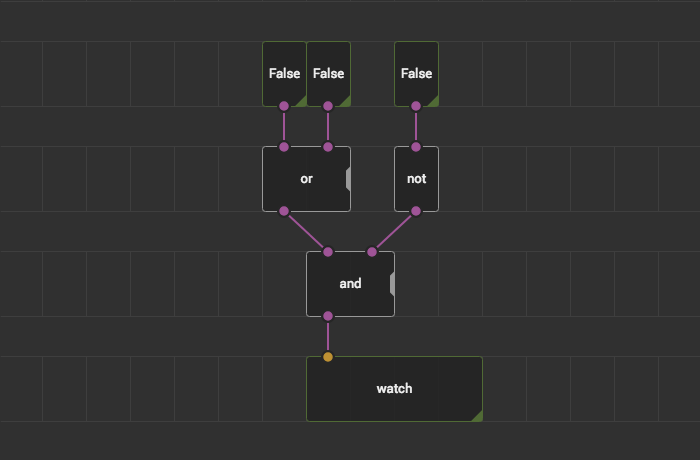Booleans

In previous lessons we mostly dealt with numbers adjusting counter step and clock interval. Now let’s talk about booleans. They have only two possible values:
- True (aka logic one, high signal)
- False (aka logic zero, low signal)
Booleans are extremely useful and common. They may be used to indicate whether some condition is met, should a device be on or off, did some operation succeed, etc.
Exercise #
Let’s learn how boolean values can be combined.
- Read the descriptions for
and,orandnotnodes. - Guess what the output value of
andwill be. - Run the simulation to confirm it.
- Use
tweak-booleannodes to change it to the opposite value.
Check out descriptions for nand, nor and xor nodes. Add them onto the patch along with some additional tweaks to make a more complex processing.
👆 Ladder logic #
If one would use binary sensors like buttons or mechanic switches as a source of boolean values and relays instead of watches, he can use XOD to program PLC devices resembling the ladder programming which is common in industrial applications.